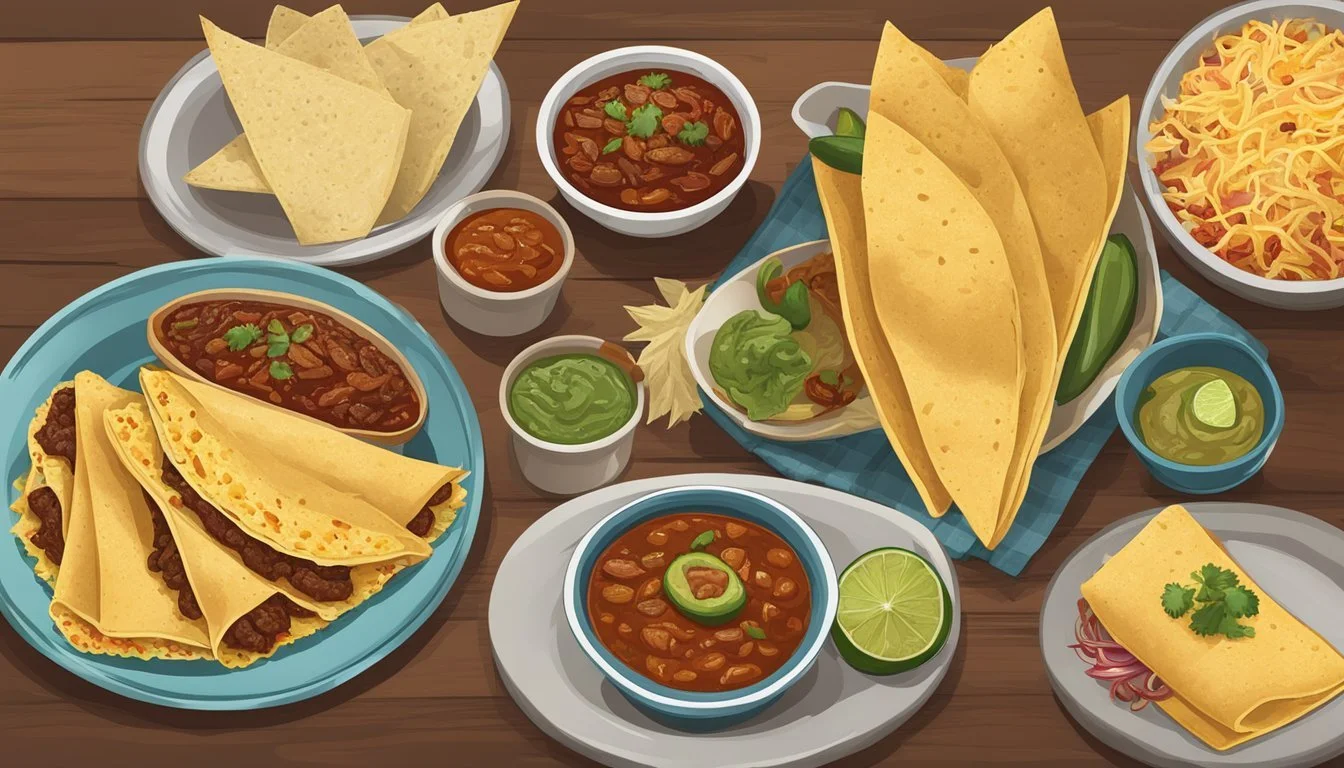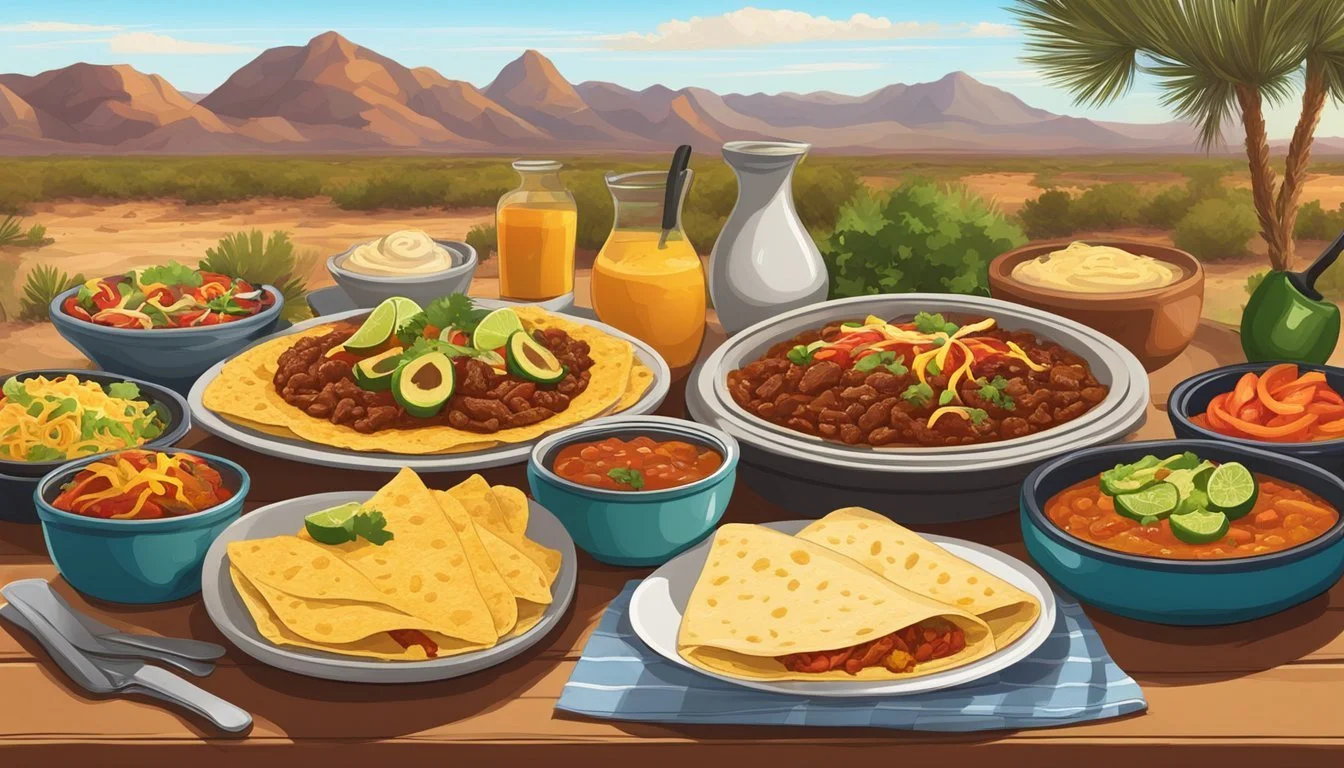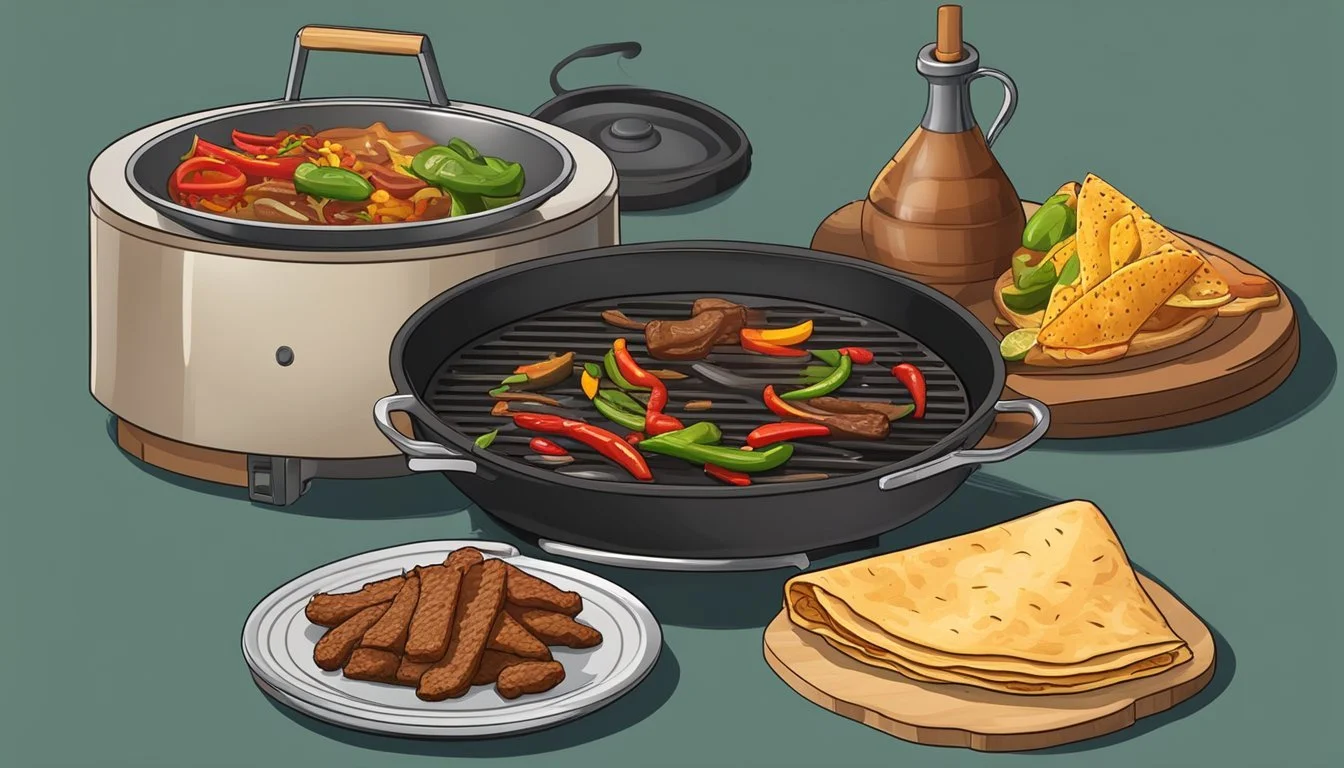5 Unique Texas-Mex Dishes Every Food Lover Must Try
Texas-Mex cuisine, often referred to as Tex-Mex, showcases a vibrant fusion of flavors blending traditional Mexican dishes with Texas influences. This culinary style has gained popularity far beyond the Lone Star State for its unique combination of ingredients and bold spices that create unforgettable meals.
Tex-Mex dishes offer an array of flavors and textures that provide a delightful dining experience. Whether enjoyed at a local eatery or prepared at home, Tex-Mex foods continue to capture the hearts and palates of food enthusiasts everywhere. This article explores five distinct Tex-Mex dishes that stand out for their inventiveness and delicious taste.
1) Puffy Tacos
Puffy tacos stand out as a unique element of San Antonio's vibrant Tex-Mex culinary landscape. The origin of this dish can be traced back to the city’s rich Tex-Mex heritage. Unlike traditional tacos, the tortilla for a puffy taco is fried until it puffs up, creating a light, airy, and crispy shell.
The rise in popularity of puffy tacos in San Antonio is attributed to local eateries like Teka Molino, established in 1937. Teka Molino and other local establishments have made this dish a staple in the city's food scene. The unique texture of the taco shell provides an appealing contrast to the flavorful fillings.
Henry's Puffy Tacos is another renowned place that highlights this dish. Their variety of toppings and salsas complement the crispy taco shell, offering a distinct and enjoyable taco experience. This establishment has solidified its reputation as a go-to spot for puffy tacos in San Antonio.
Making puffy tacos involves a simple mixture of masa harina, baking powder, salt, and warm water. The dough is divided and flattened, then fried until it puffs up. This technique not only creates a unique texture but also enhances the overall flavor of the taco shell.
For those interested in trying these acclaimed puffy tacos, Henry's Puffy Tacos is located at 6030 Bandera Rd., San Antonio, TX. More information can be found on their website at henryspuffytacos.com.
2) Chicken-Fried Steak Fajitas
Chicken-Fried Steak Fajitas combine two beloved Tex-Mex and Southern dishes into one flavorful meal. This unique recipe starts with tenderized steak, typically a cut like cube steak or a pounded-out sirloin, which is breaded and fried until crispy.
The fajitas element adds a twist with classic fajita ingredients like sautéed bell peppers and onions. These vegetables bring a fresh, sweet flavor that complements the rich, crunchy steak.
Seasoning for the steak includes a mix of typical fajita spices such as cumin, paprika, and garlic. A splash of lime juice enhances the flavor by adding a zesty note that cuts through the richness of the fried steak.
To serve, the Chicken-Fried Steak Fajitas are placed in warm flour tortillas. Common toppings like shredded cheese, salsa, and guacamole can be added according to personal preference. This dish offers a satisfying combination of textures and flavors that are sure to impress.
Feel free to garnish with chopped cilantro and a dollop of sour cream for an extra layer of taste. This fusion dish is a creative way to enjoy familiar flavors in a new and exciting fashion.
3) Brisket Enchiladas
Brisket enchiladas offer a delightful fusion of tender, smoky meat and traditional Tex-Mex flavors. The brisket, after being slow-cooked to perfection, is shredded and mixed with a rich enchilada sauce. This mixture is then rolled into soft tortillas.
The magic lies in the layers of flavor. A typical recipe involves pouring a bit of enchilada sauce in the baking dish before arranging the rolled tortillas.
Once assembled, more sauce is ladled on top, along with a generous sprinkling of cheese. The enchiladas are baked until bubbly and slightly crispy on the edges.
Whether using homemade enchilada sauce or a store-bought one, ensuring the brisket is well-cooked and flavorful is key. This dish often features a combination of spices like chili powder, cumin, and garlic to enhance the overall taste.
For a bit of a twist, some variations might include adding beans or corn into the filling. This adds more texture and variety.
Brisket enchiladas can be served with sides like Spanish rice, refried beans, or a fresh green salad. A sprinkle of fresh cilantro and a squeeze of lime can brighten up the dish just before serving. This Texas-Mex favorite combines the heartiness of barbecue with the comforting allure of enchiladas, making it a crowd-pleaser.
4) Chili con Queso
Chili con Queso is a beloved Tex-Mex dip, known for its creamy, flavorful blend of melted cheese and spicy ingredients. It's often served warm with tortilla chips, making it a popular choice at gatherings and parties.
The base of the dish typically includes melted cheese, with Velveeta being a common choice due to its creamy texture. Some recipes call for a mix of cheeses like cheddar or Monterey Jack for extra flavor.
Vegetables such as onions, garlic, and tomatoes are frequently added, enhancing the savory profile. Fresh or canned chiles contribute heat and depth, which can be adjusted to personal taste.
Many variations exist, with some including additional ingredients like ground beef or pico de gallo. Some recipes advise using evaporated milk and cornstarch to achieve a smooth consistency.
Despite its simplicity, Chili con Queso offers a rich, satisfying taste experience. Its versatility allows it to accompany a wide range of Tex-Mex dishes, making it a staple in the cuisine.
5) Texas Caviar
Texas Caviar, also known as Cowboy Caviar, is a vibrant and flavorful dish that embodies the essence of Tex-Mex cuisine. This salad features a mix of black-eyed peas and other beans, often paired with corn, bell peppers, and onions.
The dressing typically includes ingredients like olive oil, vinegar, garlic powder, and cumin. These contribute to a tangy and refreshing taste that complements the crunchy vegetables.
Preparation involves mixing all the chopped vegetables and beans in a large bowl. The dressing can be whisked together separately and then poured over the mixture.
This dish is versatile. It can be served as a dip with tortilla chips or as a side salad. It also improves in taste if left to marinate for a while, enhancing the flavors.
Given its simplicity and delightful taste, Texas Caviar is a favorite at gatherings and potlucks. Its colorful presentation makes it an attractive addition to any table.
By combining basic ingredients and a straightforward preparation method, Texas Caviar offers a healthy and delicious option for those craving Tex-Mex flavors.
History of Tex-Mex Cuisine
Tex-Mex cuisine is a flavorful fusion of Mexican and Texan culinary traditions. Its development has been shaped by historical events and cultural adaptations, leading to a unique gastronomic experience.
Origins and Influences
Tex-Mex cuisine originated when Spanish settlers and Mexican immigrants brought their culinary practices to Texas. This fusion began over 300 years ago when Texas was part of the Spanish colony known as New Spain.
After Mexico gained independence in 1821, Texas remained closely linked to Mexican traditions. Key ingredients such as chili peppers, corn, and beans are common in both Tex-Mex and Mexican cuisines. As Mexican immigrants adjusted their recipes to available American ingredients, unique dishes emerged.
Evolution Over Time
In the early 20th century, the availability of new ingredients like flour tortillas, canned tomatoes, and yellow cheddar cheese further shaped Tex-Mex cuisine. Influential dishes, including nachos and fajitas, were created during this period to cater to American palates.
Processed foods and spices, such as cumin and chili powder, became staples. The 1880s saw the rise of chili con carne in San Antonio, popularized by "chili queens." Over time, restaurants embraced these dishes, spreading Tex-Mex flavors globally.
Ingredients Commonly Used in Tex-Mex Dishes
Tex-Mex cuisine is distinguished by its blend of rich, bold flavors and hearty ingredients. The key to mastering Tex-Mex lies in understanding the staple spices and essential proteins that form its foundation.
Staple Spices
Spices are the heart of Tex-Mex cooking, contributing depth and complexity to the dishes.
Cumin: Ground cumin is a fundamental spice, offering an earthy, slightly citrusy flavor. It's frequently used in meat rubs, chili, and bean dishes.
Chili Powder: This spice mix, often comprising ground dried chilies, garlic powder, and oregano among others, provides a flavorful heat essential for tacos, enchiladas, and more.
Paprika: Both sweet and smoked varieties are popular. Smoked paprika adds a distinctive smoky flavor to dishes like fajitas and grilled meats.
Oregano: Tex-Mex dishes typically use Mexican oregano, which has a more robust and citrusy flavor compared to Mediterranean oregano.
Fresh herbs like cilantro also play a significant role, adding brightness and freshness to dishes like salsa and guacamole.
Essential Proteins
The proteins used in Tex-Mex cuisine are varied and substantial, often the centerpiece of the meal.
Beef: Beef, particularly ground beef or cuts like skirt steak, is a staple in many dishes. Tacos, fajitas, and chili often highlight hearty beef flavors seasoned with Tex-Mex spices.
Chicken: Versatile and widely used, chicken is found in everything from enchiladas to burritos. Grilling or slow-cooking with spices helps to infuse deep flavors.
Pork: Carnitas and chorizo are popular pork preparations. Carnitas are typically braised or slow-cooked, while chorizo is a spiced sausage used in breakfast tacos and quesadillas.
Beans: Pinto and black beans are essential, often used in refried beans or as a protein-rich base in vegetarian dishes.
Combining these proteins with staple spices enables the creation of authentic and satisfying Tex-Mex dishes that resonate with the vibrant culinary traditions of the region.
Cooking Techniques and Methods
Different cooking techniques play a crucial role in shaping the flavors of Tex-Mex dishes. This section will explore the traditional methods that provide the foundation, as well as modern adaptations that have emerged.
Traditional Cooking Methods
Traditional Tex-Mex cuisine often relies on grilling, roasting, steaming, and frying. Grilling meats like skirt or flank steak for carne asada is a common practice, imparting a smoky flavor and a charred exterior.
Roasting is another essential method, used for preparing various meats and vegetables. Barbacoa, for example, involves steaming meat suspended over boiling water, often wrapped in cactus or banana leaves, within a deep pit.
Frying adds a delightful crunch to various dishes. Taquitos, flautas, and chimichangas are notable examples made by this method. Each of these techniques contributes unique textures and flavors integral to traditional Tex-Mex food.
Modern Adaptations
Modern Tex-Mex cooking methods include the use of cast-iron skillets and oven-baking to achieve similar flavors with greater convenience. These adaptations provide a blend of traditional taste and contemporary efficiency.
Tamale pies, for instance, often use a cast-iron skillet that can move directly from the oven to the table, highlighting the versatility of modern cookware.
New ingredients such as pre-made flour tortillas, canned tomatoes, and yellow cheddar cheese also play a significant role in evolving Tex-Mex cuisine. These innovations allow for easier preparation without losing the essence of traditional flavors.
Restaurants and chefs continually adapt old recipes to include these methods and ingredients, catering to changing tastes while preserving beloved elements of the cuisine.





